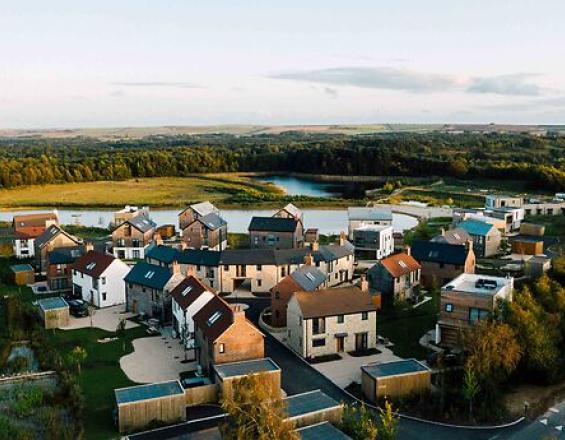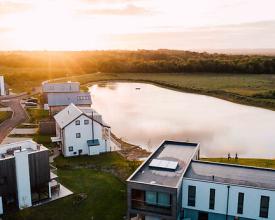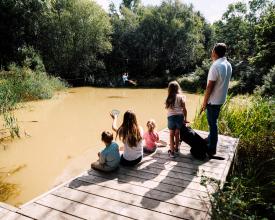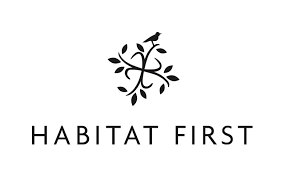
Reurbanización paisajística en beneficio de las personas y la vida salvaje

Con una acreditación Excelente de Construir con la Naturaleza, Silverlake es un magnífico ejemplo de cómo el paisaje natural puede utilizarse como punto de partida para el diseño del emplazamiento y cómo ese paisaje puede protegerse en el futuro.
El emplazamiento era una cantera activa de extracción de arena con un antiguo vertedero que había sido restaurado como brezal, con varias zonas de bosque en los márgenes del emplazamiento y varios cursos de agua de distinto tamaño, edad y permanencia. El plan identificó estas importantes características locales como base para las propuestas de infraestructura verde y las incorporó al desarrollo con el fin de referenciar, reflejar y mejorar el entorno local, contribuyendo positivamente a un sentido distintivo del lugar, al tiempo que creaba una red multifuncional que proporciona un claro beneficio tanto para las personas como para la vida silvestre.
El conjunto de la urbanización abarca 227 hectáreas, de las que la huella construida sólo ocupará el 18%.
Contexto
Défis à relever
Ubicación
Impactos
Se han conservado y mejorado los hábitats clave, con elementos como aguas abiertas, humedales, aguas corrientes, brezales y turberas, bosques, tejados vivos, jardines en los tejados, SuDS, cajas para pájaros, refugios para murciélagos, cajas para lirones, estanques para tritones crestados y pastizales.
Se han diseñado elementos que favorecen la conectividad con la Red de Recuperación de la Naturaleza, por ejemplo con setos y árboles autóctonos que conectan la urbanización con el resto de la zona, permitiendo el movimiento de la fauna por toda la zona y conectando áreas como el bosque de Knighton Heath, que han quedado aisladas por la actividad de extracción de minerales.
En todo el proyecto se utilizan elementos integrales de infraestructura verde para contribuir a la gestión de las aguas superficiales y mejorar la calidad del agua dentro de la urbanización; por ejemplo, se ha adoptado una serie de componentes de SuDS para mejorar la gestión de las aguas superficiales, incluido el uso de estanques en cascada, pavimento permeable "Bod", cunetas y estanques efímeros. Todas las aguas superficiales acaban desembocando en el lago, pero el número de elementos del tren de gestión también mejora el tratamiento de la calidad del agua a través de las SuDS.
El sitio se gestiona para maximizar sus beneficios para la vida silvestre a través de un Plan de Gestión Paisajística y Ecológica, aprobado por los Consejos del distrito y del condado, y las prescripciones de gestión relativas a la ciénaga SSSI han sido aprobadas por Natural England.





